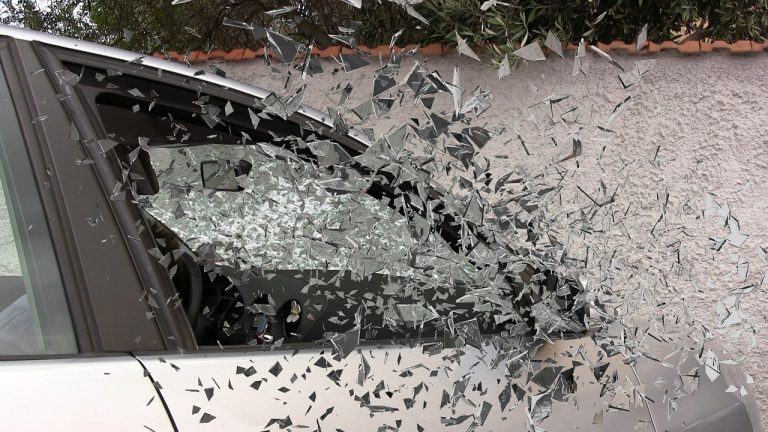7 Ways To Prevent Occupational Hazards
Occupational hazards refer to all potential dangers in the workplace that can harm a group or an individual. They can encompass various risks, including chemical, physical, biological, or psychosocial.
In other words, any illness or accident acquired at the workplace is due to the risk of an occupational hazard. Construction, roofing, aviation, waste management, and hunting industries usually have higher than average death rates while on the job. Accidents during transport, slipping or falling, fires or explosions, and exposure to harmful substances in the environment are only a few examples of routine incidents at work.
Fortunately, federal and state organizations exist to minimize the risk and hazards associated with the workplace. They monitor and examine the conditions and environment of companies to ensure employees remain safe and their health doesn’t get compromised. In the United States, the Occupational Safety and Health Administration (OSHA) agency inspects and guarantees that an organization is compliant with safety regulations.
While specific strategies for a safe workplace may vary depending on where you work, here are seven basic ways you can apply regardless.
1. Identify All Potential Risks
The first step in mitigating occupational hazards is identifying all potential risks. Check all equipment and appliances used in your workplace. Look for damaged or broken parts that may cause harm to you or your coworkers. Assessing your work environment for possible health and safety threats is crucial to preventing injuries and illnesses.
Earning an occupational health and safety degree online can provide you with the necessary knowledge and skills to identify and review the hazards at your workplace. Once you have the relevant expertise, start by inspecting the work practices and types of equipment. Interview coworkers and managers to boost staff morale and address any concerns with safety practices.
Employers can consult occupational safety officers to minimize accident risks and maintain a solid safety record. In situations where injuries have already happened, such as on construction sites, employers can collaborate with a construction accident attorney to safeguard their employees and business interests.
2. Conduct Routine Checks And Mock Drills
The most effective strategy for preventing occupational hazards is to conduct regular perusals and mock drills every few months. These routine inspections ensure that any faulty machinery or equipment gets repaired as soon as possible to minimize the risk of any potential incident occurring. Since most organizations tend to upgrade their tools, procedures, and substances over time, they could lead to new hazards. Therefore, it’s vital to review all ongoing processes regularly. Some questions that can help you perform risk assessment are:
- Have there been any significant changes?
- Are there still any improvements needed?
- Have workers spotted a problem?
Organizing mock drills for emergency procedures is also an excellent way of preventing occupational hazards from occurring in the first place. In most states, having an emergency plan is a legal requirement and the responsibility of individual organizations. However, these plans aren’t beneficial unless workers have had a chance to practice and internalize the appropriate protocols.
3. Determine Control Options
Controls are specific measures or strategies designed to eliminate or minimize possible risks in the workplace. They must be practical, feasible, and permanent. When selecting controls, it’s helpful to choose them according to their hierarchy. For instance, removing the hazard comes first, substituting isolation, updated work protocols, and personal protective equipment.
When selecting controls, be careful not to introduce new hazards directly or indirectly. For example, by wearing hearing protection, you may not be able to hear fire or backup alarms and end up getting stuck in a catastrophic situation.
Substituting hazardous chemicals with less hazardous alternatives is a common approach, but the new chemicals may have their risks, like flammability or reactivity under certain conditions. Increased lighting can prevent slips and falls, but excessive lighting or glare can cause eye strain and concentration issues.
Automation reduces repetitive stress injury risks, yet malfunctioning systems or inadequate maintenance can introduce equipment failure or unexpected movements as new hazards. Traffic management systems can prevent accidents but may cause congestion or confusion if not well-planned, potentially leading to accidents or delays. Emergency shutdown systems mitigate chemical release risks, but if they fail, uncontrolled releases or explosions can result.
4. Develop And Regularly Update Hazard Plans
The primary objective of hazard mitigation plans is to prepare the workforce for any sudden illness, accident, or injury while on the job. Organizations develop them to identify, assess, and reduce short- and long-term dangers to life, property, and the environment. A hazard plan covers a range of artificial and natural threats. It typically includes four principal elements: risk assessment, capability assessment, mitigation strategy, and maintenance procedures. Together, they can help you determine controls for minimizing occupational hazards.
Once you’ve selected your controls, it’s time to implement them into your plan. All successful plans address the most severe hazards first. While developing them, it may be necessary to use interim controls so you can work on building long-term solutions. After making a list of risks requiring intervention, assign responsibility to an individual or group to install and implement these controls.
5. Reduce Environmental Stress
Your work environment plays a significant role in your overall performance and productivity. Working and being exposed to severe deteriorating conditions can adversely affect your physical and mental health. Some jobs require their employees to work under fluctuating and harsh temperatures or in the presence of certain chemicals and fumes. You must wear the appropriate protective gear to prevent putting your health in jeopardy in these situations.
When your well-being gets compromised, you tend to make mistakes and potentially increase the risk of occupational hazards. Even toxic work environments, constantly working under pressure, and obstinate bosses can contribute to an employee’s poor mental health. Therefore, organizations must implement relevant protocols to eliminate stressful work conditions and keep their employees safe and secure.
6. Post Appropriate Signage And Labels
It’s impossible to overstate the importance of safety signs and appropriate labeling of equipment and material in any industry. The vital purpose of posting signage is to remind employees to be careful and stay aware of critical turns or junctures. Depending on where you work, safety signs can contain any message to keep workers as safe as possible within the company’s boundaries. You must also label each chemical, biological or physical agent used in the workplace with relevant tags and caution signs. Although these identifiers protect all staff members who come in contact with it, they are highly beneficial for new employees and trainees hired in your organization.
7. Receive Training On Emergency Procedures
Regardless of their industry, all workplaces must ensure their staff receives proper training regarding emergency procedures. Before allowing workers to begin their job, employers must ensure that they possess the necessary safety competence. As an employer, you can define the relevant safety proficiency of your employees yourself, but it typically includes education, training, or work experience. In some cases, you may also need to implement a combination of these.
All members of an organization, especially new and young workers, should be trained and competent to handle emergencies. This training encompasses emergency response procedures, evacuation protocols, first aid and medical response, fire safety, hazard recognition, communication protocols, safety equipment use, shelter-in-place procedures, incident command structure, critical equipment shutdown, emergency contact information, behavior in hostile situations, mental and emotional support, as well as regular drills and exercises. Importantly, the training should also emphasize the need for accurate documentation and reporting of incidents and near-misses.
Conclusion
If you ever believe your workplace is unsafe and full of occupational hazards, you must immediately report it to your employer. Never take any chances with your safety, and always stay prepared. To keep your workplace hazard-free, follow these strategies and avoid all possible risks of an injury.



